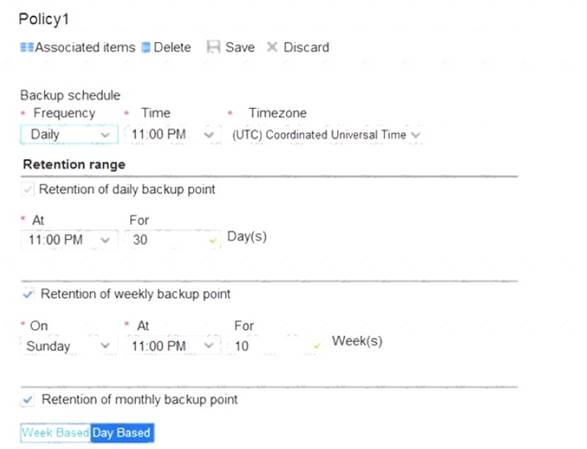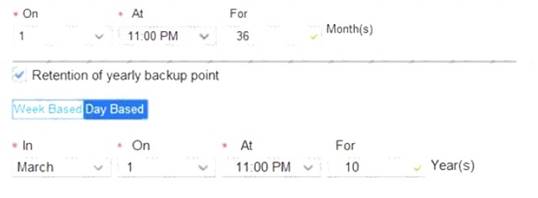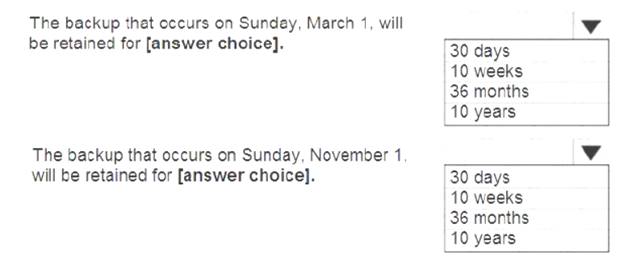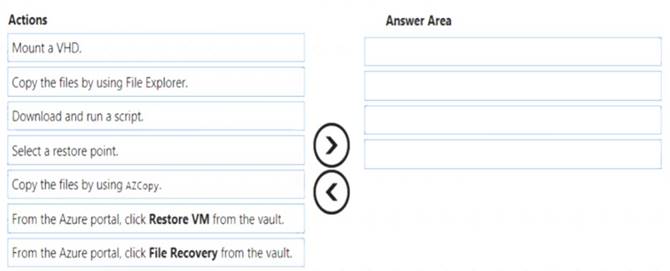- (Exam Topic 6)
You are the global administrator for an Azure Active Directory (Azure AD) tenet named adatum.com. You need to enable two-step verification for Azure users.
What should you do?
Correct Answer:
A
Identity Protection analyzes signals from each sign-in, both real-time and offline, and calculates a risk score based on the probability that the sign-in wasn't performed by the user. Administrators can make a decision based on this risk score signal to enforce organizational requirements. Administrators can choose to block access, allow access, or allow access but require multi-factor authentication.
If risk is detected, users can perform multi-factor authentication to self-remediate and close the risky sign-in event to prevent unnecessary noise for administrators.
With Azure Active Directory Identity Protection, you can:  require users to register for multi-factor authentication
require users to register for multi-factor authentication  handle risky sign-ins and compromised users
handle risky sign-ins and compromised users
References:
https://docs.microsoft.com/en-us/azure/active-directory/identity-protection/flows
- (Exam Topic 5)
You create a Recovery Services vault backup policy named Policy1 as shown in the following exhibit:

Use the drop-down menus to select the answer choice that completes each statement based on the information presented in the graphic.
NOTE: Each correct selection is worth one point.
Solution:
Box 1: 10 years
The yearly backup point occurs to 1 March and its retention period is 10 years. Box 2: 36 months
The monthly backup point occurs on the 1st of every month and its retention period is 36 months.
Does this meet the goal?
Correct Answer:
A
- (Exam Topic 6)
Note: This question is part of a series of questions that present the same scenario. Each question in the series contains a unique solution that might meet the stated goals. Some question sets might have more than one correct solution, while others might not have a correct solution.
After you answer a question in this section, you will NOT be able to return to it. As a result, these questions will not appear in the review screen.
Your company has 100 users located in an office in Paris.
The on-premises network contains the servers shown in the following table.
You create a new subscription. You need to move all the servers to Azure. Solution: You run azcopy.exe.
Does this meet the goal?
Correct Answer:
B
- (Exam Topic 4)
You have an Azure Linux virtual machine that is protected by Azure Backup. One week ago, two files were deleted from the virtual machine.
You need to reses clients connect n on-premises computer as quickly as possible.
Which four actions should you perform in sequence? To answer, move the appropriate actions from the list of actions to the answer area and arrange them in the correct order.
Solution:
To restore files or folders from the recovery point, go to the virtual machine and choose the desired recovery point.
Step 0. In the virtual machine's menu, click Backup to open the Backup dashboard. Step 1. In the Backup dashboard menu, click File Recovery.
Step 2. From the Select recovery point drop-down menu, select the recovery point that holds the files you want. By default, the latest recovery point is already selected.
Step 3: To download the software used to copy files from the recovery point, click Download Executable (for Windows Azure VM) or Download Script (for Linux Azure VM, a python script is generated).
Step 4: Copy the files by using AzCopy
AzCopy is a command-line utility designed for copying data to/from Microsoft Azure Blob, File, and Table storage, using simple commands designed for optimal performance. You can copy data between a file system and a storage account, or between storage accounts.
References:
https://docs.microsoft.com/en-us/azure/backup/backup-azure-restore-files-from-vm https://docs.microsoft.com/en-us/azure/storage/common/storage-use-azcopy
Does this meet the goal?
Correct Answer:
A
- (Exam Topic 6)
You have an Azure subscription that contains a resource group named RG1. RG1 contains 100 virtual
machines.
Your company has three cost centers named Manufacturing, Sales, and Finance. You need to associate each virtual machine to a specific cost center.
What should you do?
Correct Answer:
C
You apply tags to your Azure resources, resource groups, and subscriptions to logically organize them into a taxonomy. Each tag consists of a name and a value pair. For example, you can apply the name "Environment" and the value "Production" to all the resources in production
References:
https://docs.microsoft.com/en-us/azure/billing/billing-getting-started https://docs.microsoft.com/en-us/azure/azure-resource-manager/resource-group-using-tags